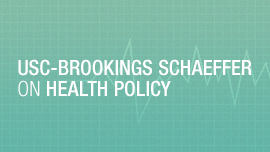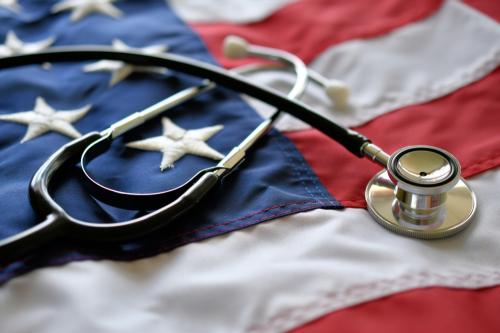Editor’s note: This post is part of a Health360 special series that provides a look back at the impact of the Affordable Care Act since it was signed in March 2010. To view additional posts, click here.
In the five years since its passage into law, the Affordable Care Act has and will continue to attract criticism and scrutiny. Whether it is the GOP commitment to repeal the Act or the current Supreme Court case that could potentially undermine the health insurance exchanges, there is no lack of controversy around the ACA. But behind the noise and confusion, there are some major forces at work that are driving new models of care and changing the way we practice, pay for, and evaluate health care.
Your doctor may not even realize these changes are occurring but here are five ways your visit might be different than five years ago.
1.
Your physician might be part of a patient care team.
New payment models in the ACA, such as accountable care organizations promote team-based care. There is growing evidence that shows providing care in a team can lead to higher quality care and better health outcomes for patients. Also, at a time in which the demand for health care is increasing– both because the ACA expanded coverage and the population is aging and requiring more care– a team can support doctors by taking on routine administrative tasks, patient follow up, and coordinating your care with other doctors. Care teams may also be interdisciplinary, including non-clinical staff such as social workers, behavioral and community health workers, and patient navigators when necessary. This allows doctors to spend time providing more intensive, specialized care such as diagnosing patients and devising a treatment plan. As a result, you might interact more with non-physician staff when it comes to follow up calls, medication instructions or symptom management. In some cases, patients might also work with social workers or patient navigators to help them access housing or job training.
2.
Prevention and wellness are more important than ever.
One of the biggest steps the ACA has taken toward encouraging a culture of wellness and prevention was ensuring that health plans covered all preventive screenings, immunizations, and well visits for women at no cost. Since the policy took effect in September 2010 it is estimated that an additional 76 million people now receive preventive care. The law also included these services among the Essential Health Benefits; the minimum benefits required in order for health insurance plans to participate in the Obamacare exchanges. Moreover, under new payment models, doctors are now being financially supported to take a more proactive approach to patient care and making sure their patients are healthy, rather than only treating them when they are sick or come in for visits. Therefore, patients may experience more interactions with members of the care team when it’s time for recommended tests, immunizations, or well visits.
3.
You may have better access to care on evenings and weekends.
To participate in new payment models such as bundled payments, practices are often required to offer extended hours for their patients on evenings and weekends to reduce the overuse of expensive and unnecessary emergency room visits. Many patients can now expect to call their doctor’s office and get clinical advice at any time. For example, a new model for treating cancer patients requires that participating practices provide their patients with 24/7 hour access to a clinician who has real-time access to their medical records.
4.
Chances are your health information is being stored in an electronic health record, not a paper file.
An electronic health record (EHR) is a digital version of a patient’s medical chart, which if used appropriately can significantly improve patient care. While the use of EHRs was encouraged through a separate law from the ACA (and significantly increased provider adoption of these tools), participation in the new ACA-promoted delivery models is practically impossible without the use of EHRs. Depending on how advanced they are EHRs can be used to improve a patient’s care in several different ways. For example, doctors can set up online patient portals where patients can receive educational materials, view a history of their visits or lab results. More advanced systems can use EHR information to predict when a patient’s health is deteriorating so that life threatening conditions such as cardiac arrest can be prevented. However, there is still a long way to go before patients can expect for their information to be seamlessly integrated and exchanged across different doctors and settings in real-time.
5.
You can access care remotely, wherever you are.
Increasingly, to keep their patients healthy, doctors are using mobile technology and virtual visits to provide care in rural or remote areas and to make themselves more efficient and available to patients. The uptake of these technologies means that patients can consult and communicate with their doctors through a variety of user-friendly internet, mobile, and video tools without having to physically be in the office.
For example, services like NowClinic allow patients to “meet” with a physician by communicating over the phone or via instant messaging. Patients can receive a diagnosis for minor conditions without having to leave home or work. The trend is being picked up by several large insurance companies and employers to save costs related to in-office visits, but also for offering access to care that might otherwise be sought out in the emergency room or that might be delayed and cause more serious illness.
The Brookings Institution is committed to quality, independence, and impact.
We are supported by a diverse array of funders. In line with our values and policies, each Brookings publication represents the sole views of its author(s).




Commentary
5 ways that Obamacare might have changed your doctor’s office visit
March 20, 2015